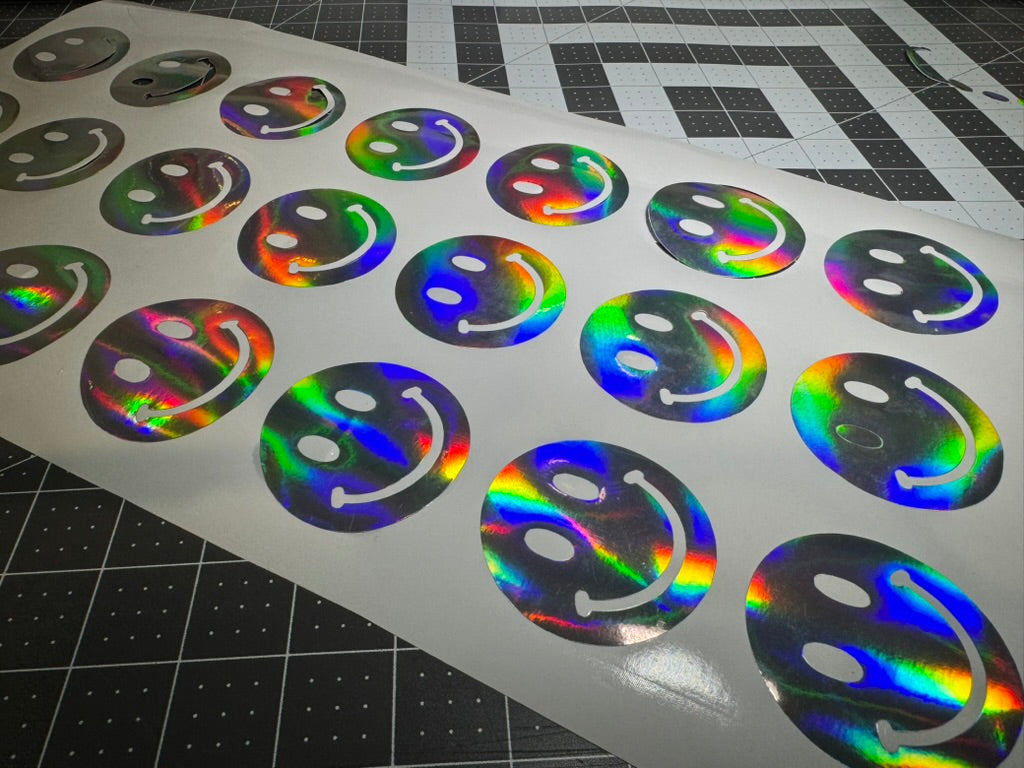Starting an ecommerce site is a common goal for people looking to sell products online. Shopify is one of the platforms people often choose to build their first online store.
This guide breaks down how to start your own ecommerce site with Shopify step by step. Each section provides clear, plain-language explanations to help you understand the process before making decisions.
Whether you're building a side business or planning a full-time operation, this article explains what Shopify is and how it works in 2025.
What Is an Ecommerce Site on Shopify
An ecommerce site on Shopify is an online store built using Shopify's platform. It lets you sell physical products, digital goods, and services through a website with shopping cart functionality.
Shopify is a hosted solution, meaning they handle the technical parts like website infrastructure and security updates. This differs from self-hosted platforms where you manage your own servers.
First-time business owners often choose Shopify because it doesn't require coding knowledge. You control your store through a web dashboard where you can change the design, add products, and adjust settings.
Find Your Product Niche and Brand Focus
A product niche is a specific category of items your store sells. Finding your niche means matching your interests with what customers want to buy. A focused niche helps you stand out from competitors and connect with the right audience.
To identify a good niche, start by listing topics you know well. Then research if people actively buy products in those categories. Look for steady demand and ways to offer something different from existing stores.
Here's how different niches compare:
|
Niche Type |
Pros |
Cons |
Example Products |
|---|---|---|---|
|
Passion-based |
High personal interest |
May have limited buyers |
Custom apparel, craft supplies |
|
Problem-solving |
Clear customer need |
May require customer education |
Specialized tools, unique solutions |
|
Trending products |
Ready audience |
Often short-lived popularity |
Seasonal items, fashion accessories |
Your brand focus should reflect what makes your products special. For custom apparel businesses, this might be using premium materials like high-quality heat transfer vinyl that creates more detailed designs than competitors offer.
Plan Your Budget and Understand Shopify Costs
Starting a Shopify store requires several types of expenses. Understanding these costs helps you plan your budget realistically.
The minimum to launch a basic Shopify store is around $100-$150. This covers your first month's subscription, domain name, and small marketing budget. A more complete setup might cost $300-$500.
Here's a breakdown of what you'll pay for:
-
Shopify Plan Fees: Shopify offers three main pricing levels:
-
Basic: $39/month with core features and 2 staff accounts
-
Shopify: $105/month with more reporting and 5 staff accounts
-
Advanced: $399/month with advanced analytics and 15 staff accounts
-
-
Transaction Fees: When customers pay, you'll be charged:
-
No extra fees with Shopify Payments
-
0.5%-2% per transaction with external payment providers
-
-
Domain Name: A custom web address costs $10-$20 per year
-
Apps and Extensions: Optional tools that add features:
-
Essential apps: $0-$30/month
-
Premium apps: $50+/month
-
-
Marketing Budget: Starting budget for ads: $50-$100
Many stores operate with just the Basic plan and free apps at first, then add more as they grow.
Set Up Your Shopify Account and Choose a Theme
1. Create a Shopify Account
To start your Shopify store, visit shopify.com and click "Start free trial." Enter your email, password, and store name (which you can change later).
Shopify will ask about your business goals and what you plan to sell. These questions help set up your store. After answering, you'll see your admin dashboard with a checklist of setup tasks.
The dashboard has a menu on the left with sections like "Products," "Orders," and "Online Store." This is your control center for managing everything about your store.
2. Pick a Theme and Customize Layout
Your theme determines how your store looks. From your dashboard, go to "Online Store" → "Themes" to see options.
Shopify offers both free and paid themes. Free themes work well for new stores, while paid themes ($180-$350) include more features and layout options.
When choosing a theme, consider:
-
Industry fit: Does it match what you're selling?
-
Mobile display: How does it look on phones?
-
Loading speed: Faster themes keep customers from leaving
-
Customization options: Can you make it match your brand?
After selecting a theme, click "Customize" to change colors, fonts, and layouts. The editor lets you drag sections around, add new content blocks, and preview how everything looks.
![Image placeholder: Screenshot of Shopify theme customization interface showing drag-and-drop editing]
Add and Organize Your Products for Success
1. Upload Product Details
Adding products is straightforward in Shopify. From your dashboard, click "Products" → "Add product."
For each product, include:
-
A clear title (like "Matte Black Heat Transfer Vinyl Roll 12" x 10 ft")
-
A detailed description explaining what the product is and how to use it
-
High-quality photos showing the product from multiple angles
-
Price and any sale pricing
-
SKU (stock keeping unit) for inventory tracking
-
Weight and dimensions for shipping calculations
If your product comes in different options (like colors or sizes), set these up as variants. Each variant can have its own price, SKU, and inventory count.
2. Set Pricing and Inventory
When setting prices, calculate all your costs first. This includes what you pay for the product, shipping materials, platform fees, and desired profit.
Enable inventory tracking by checking "Track quantity" and entering how many items you have in stock. You can also set up alerts for when inventory gets low.
For products with multiple variations, you can track inventory for each option separately. This helps prevent selling out-of-stock items.
3. Optimize Product Descriptions for SEO
Well-written product descriptions help customers and search engines understand what you're selling. Include relevant keywords that shoppers might search for.
For example, instead of just saying "vinyl roll," use specific terms like "heat transfer vinyl for custom t-shirts" if that's what customers are searching for.
Make descriptions easy to scan by using:
-
Short paragraphs
-
Bullet points for features and specifications
-
Headers to organize longer descriptions
Add alt text to product images to help with accessibility and SEO. This text should describe what the image shows, like "Black heat transfer vinyl applied to white t-shirt."
Configure Payment, Shipping and Checkout
1. Enable Payment Gateways
Payment gateways let customers pay you online. Shopify Payments is built in and processes credit cards without extra transaction fees.
You can also add other payment options like:
-
PayPal
-
Apple Pay
-
Google Pay
-
Shop Pay
-
Amazon Pay
To set up payments, go to "Settings" → "Payments" in your dashboard. Some payment methods may require creating accounts on external websites first.
2. Set Shipping Zones and Rates
Shipping settings determine how much customers pay for delivery. Go to "Settings" → "Shipping and Delivery" to set this up.
You can create different shipping zones (like USA, Canada, International) and set different rates for each. Three common approaches to shipping rates are:
-
Flat rates: A fixed price regardless of order size
-
Calculated rates: Real-time quotes from carriers based on weight and destination
-
Free shipping: Often offered above a minimum purchase amount
For products like vinyl rolls, accurate weight settings help calculate shipping costs correctly. Test your shipping settings by placing a test order to make sure the rates make sense.
3. Customize Checkout Settings
The checkout process is where customers complete their purchase. Under "Settings" → "Checkout," you can adjust options like:
-
Whether customers need accounts to buy
-
What contact information to collect
-
How shipping and billing addresses are handled
-
Email notification settings
A streamlined checkout with fewer steps typically results in more completed orders. Consider enabling express checkout options like Shop Pay for faster purchasing.
Optimize for SEO and Market Your Store
1. Leverage Email Marketing and Social Media
Email marketing starts with collecting customer email addresses. Add a signup form to your homepage offering a discount or update notifications in exchange for email addresses.
Connect your Shopify store to social media platforms where your customers spend time. Shopify integrates with Instagram, Facebook, Pinterest, and TikTok, letting you tag products in posts for easy shopping.
Create content that shows your products in action. For a vinyl business, this might include videos demonstrating how to apply heat transfer vinyl or photos of finished custom apparel projects.
2. Use Shopify Analytics and Reports
Shopify includes built-in analytics to track your store's performance. From your dashboard, click "Analytics" to see reports on:
-
Sales data: Revenue, number of orders, average order value
-
Visitor information: How many people visit your store and where they come from
-
Product performance: Which items sell best and which pages get the most views
These reports help you understand what's working and what needs improvement. For example, if many visitors view a product but few buy it, you might need better photos or a clearer description.
3. Consider Paid Ads for Growth
Paid advertising can bring targeted traffic to your new store. Platforms like Google Ads, Facebook, and Instagram let you show ads to specific groups based on their interests and behaviors.
Start with a small daily budget ($5-10) to test different ad formats and audiences. Focus on showcasing your best products and unique selling points.
Track which ads bring actual sales, not just clicks. Shopify's analytics show which traffic sources lead to purchases, helping you invest in the most effective advertising channels.
Take Your Store Live and Grow
1. Remove Password Protection
When you're ready to launch, remove the password protection from your store. In your dashboard, go to "Online Store" → "Preferences" and uncheck the password protection option.
Before launching, make sure you've completed these essential tasks:
-
Added your core products with descriptions and images
-
Set up payment methods and shipping rates
-
Created basic pages like About, Contact, and Policies
-
Tested the checkout process yourself
2. Conduct Final Testing
Before officially launching, test your store thoroughly:
-
Place a test order to verify the checkout works
-
Check how your store looks on different devices (phone, tablet, computer)
-
Make sure all links work and images load properly
-
Confirm that order confirmation emails are sent correctly
Ask friends or family to browse your store and provide feedback on anything confusing or difficult to use.
3. Plan Continuous Improvements
After launching, use analytics data to guide improvements. Pay attention to:
-
Which products get the most views and sales
-
Where visitors leave your site without purchasing
-
What search terms bring people to your store
Make regular updates based on customer feedback and shopping patterns. Small changes like improving product photos, adjusting prices, or reorganizing collections can significantly impact sales.
Wrap Up: Next Steps for Your Shopify Journey
Starting an ecommerce site with Shopify involves several key steps: setting up your account, choosing a theme, adding products, configuring payments and shipping, and launching your store.
Once your store is live, focus on driving traffic through marketing and continuously improving the shopping experience based on customer feedback and analytics.
For stores selling custom products like apparel or promotional items, using quality materials directly affects customer satisfaction and repeat business. When customers receive durable, professional-looking items, they're more likely to order again and recommend your store to others.
To source materials for custom products, visit KIMS Direct's vinyl and heat transfer products for options that support detailed designs and lasting results.
Frequently Asked Questions About Starting a Shopify Store
How do I handle selling customizable products on Shopify?
Shopify supports customizable products through product option settings and specialized apps. For basic customization, add product variants for different options. For more complex personalization like text input or image uploads, install apps like Product Personalizer or Infinite Options that add these features to your product pages.
Which Shopify apps are most helpful for new store owners?
New store owners typically benefit from a few essential apps: an email marketing tool like Klaviyo for customer communication, a review app like Judge.me for building trust, and an SEO helper like Plug in SEO for improving search visibility. Start with free versions of these apps and upgrade only when needed.
What is the best way to handle customer service for a new Shopify store?
Effective customer service for new Shopify stores involves creating a clear contact page, responding to inquiries within 24 hours, and establishing straightforward policies for returns and exchanges. Adding a FAQ section to answer common questions can reduce support requests and improve customer satisfaction.







